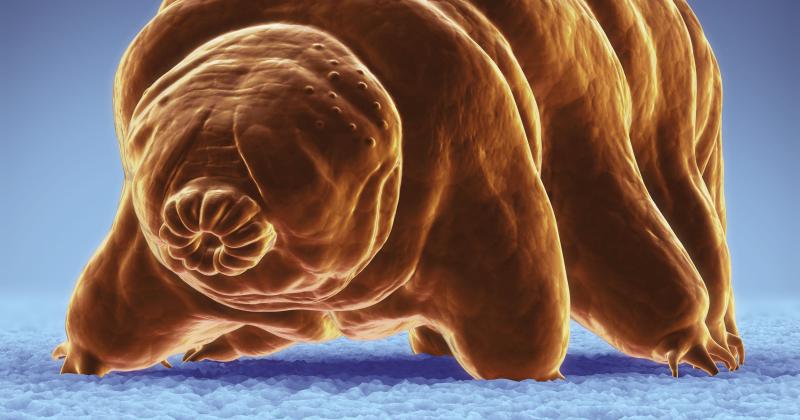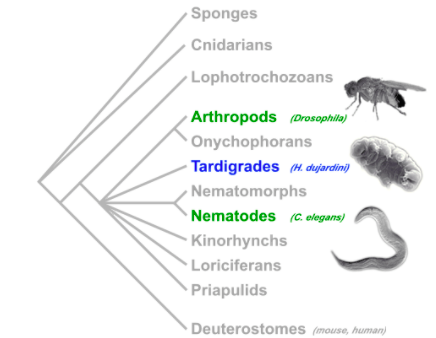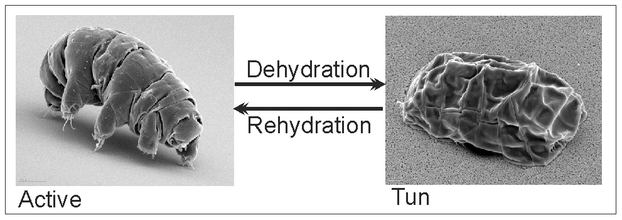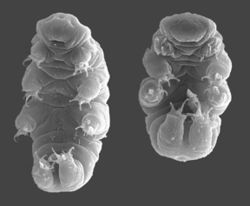Hello and welcome to another Fun Fact From Flora ,
Today we are going to have a look at some very cool little beasts called tardigrades (for you Chris). Also known as water bears or moss piglets and they look like this:
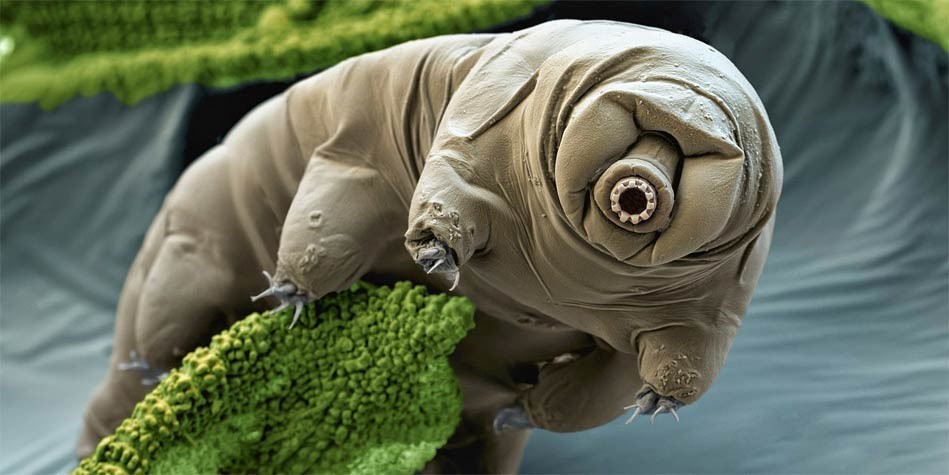
These bad boys are found in a part of the evolutionary tree called the Ecdysozoa (try saying that 5 times without stopping). This is a group that includes two large phyla which are your arthropods (invertebrates that have an exoskeleton) nematodes (roundworms). They also include a lot of smaller ones like penis worms (yes they are real and yes you should Google them) and these lovely tardigrades.
There are about 1,300 different species that we know about and the earliest ones that we know about are from about 145 million years ago , trapped in amber. These ones look pretty much identical to the ones we see know so were probably around a whole lot before that. They split off from their most recent relatives over 500 million years ago. Just saying.

They have evolved these little stumpy, non-jointed legs that they use to aid their movement and live mostly in moss. They are incredibly abundant and have been found everywhere in Earth’s biosphere from mountains to the deep sea to mud volcanoes to thermal vents and even all the way to the Antarctic.

You can also find them in your garden (they really like moss — especially moss on roofs) so if you have a pot of water to put some dry moss into and a magnifying glass you can probably find some yourself.
They are one of (if not) the most resilient animals that we know about and they can survive exposure to a huge range of extreme conditions.
They survive temperatures near to absolute zero (a bloomin -272 degrees C) and temperatures up to 150 degrees C for several minutes and pressures that are about six times greater than those found in the deepest ocean trenches. They are totally chilled with being shot with ionizing radiation at doses hundreds of times higher than the lethal dose for a human.
They have survived exposure to outer space for God’s sake — these guys don’t fuck around.
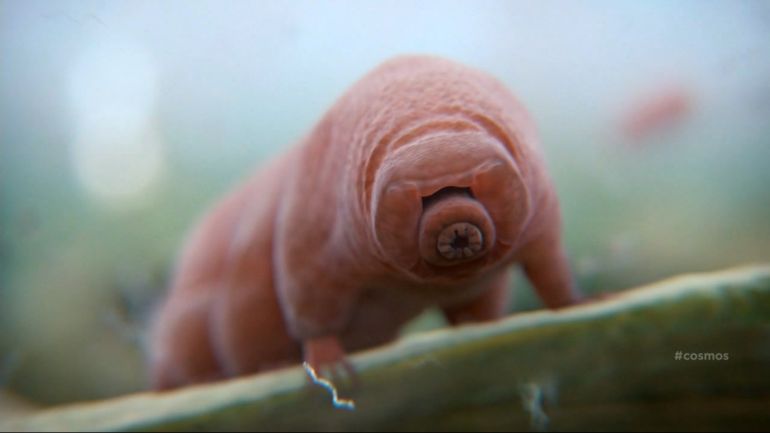
They aren’t considered to be extremophiles because they don’t thrive in these conditions, but they are able to endure them.
But how do they do it?
They can suspend their metabolisms.
HOW COOL IS THAT?!
In this state, their metabolism reaches less than 0.01% of its normal rate and their water content can decrease to only 1% of what it would be normally. In this state they are called tuns.
They can go without food or water FOR THIRTY YEARS , only to later rehydrate, forage and reproduce.
So how do they stay desiccated for so long? Why can’t we all do that?
Well, we think that it’s to do with intrinsically disordered proteins (IDPs) which they make a lot more of when they are being dried out. In fact, three of them have been found that are only seen in tardigrades and are therefore called tardigrade specific proteins (TDPs). Us biologists are really imaginative.
We think these TDPs work by maintaining the structure of all the cell membranes and therefore preventing them from becoming damaged when the tardigrade starts to rehydrate.
What is also super cool is that these TDPs are super hydrophilic and so are actually involved in what’s called a vitrification mechanism where a glass-like matrix forms inside the cell to protect the contents during desiccation.
ISN"T THAT SO COOL!?
Hope you enjoyed.
All my nerdy love,
Flora
Here’s your animal falling over GIF
